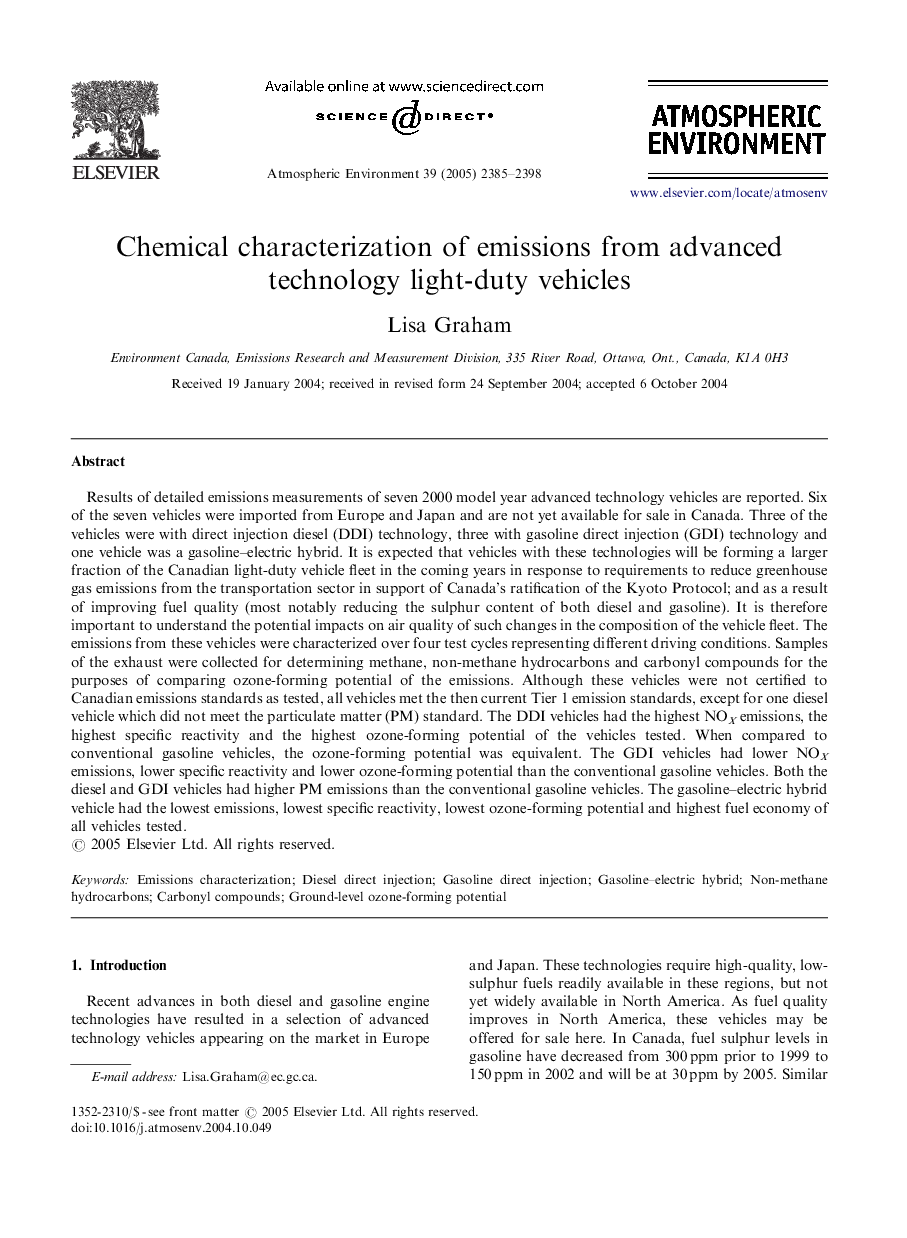| کد مقاله | کد نشریه | سال انتشار | مقاله انگلیسی | نسخه تمام متن |
|---|---|---|---|---|
| 4445547 | 1311296 | 2005 | 14 صفحه PDF | دانلود رایگان |

Results of detailed emissions measurements of seven 2000 model year advanced technology vehicles are reported. Six of the seven vehicles were imported from Europe and Japan and are not yet available for sale in Canada. Three of the vehicles were with direct injection diesel (DDI) technology, three with gasoline direct injection (GDI) technology and one vehicle was a gasoline–electric hybrid. It is expected that vehicles with these technologies will be forming a larger fraction of the Canadian light-duty vehicle fleet in the coming years in response to requirements to reduce greenhouse gas emissions from the transportation sector in support of Canada's ratification of the Kyoto Protocol; and as a result of improving fuel quality (most notably reducing the sulphur content of both diesel and gasoline). It is therefore important to understand the potential impacts on air quality of such changes in the composition of the vehicle fleet. The emissions from these vehicles were characterized over four test cycles representing different driving conditions. Samples of the exhaust were collected for determining methane, non-methane hydrocarbons and carbonyl compounds for the purposes of comparing ozone-forming potential of the emissions. Although these vehicles were not certified to Canadian emissions standards as tested, all vehicles met the then current Tier 1 emission standards, except for one diesel vehicle which did not meet the particulate matter (PM) standard. The DDI vehicles had the highest NOX emissions, the highest specific reactivity and the highest ozone-forming potential of the vehicles tested. When compared to conventional gasoline vehicles, the ozone-forming potential was equivalent. The GDI vehicles had lower NOX emissions, lower specific reactivity and lower ozone-forming potential than the conventional gasoline vehicles. Both the diesel and GDI vehicles had higher PM emissions than the conventional gasoline vehicles. The gasoline–electric hybrid vehicle had the lowest emissions, lowest specific reactivity, lowest ozone-forming potential and highest fuel economy of all vehicles tested.
Journal: Atmospheric Environment - Volume 39, Issue 13, April 2005, Pages 2385–2398